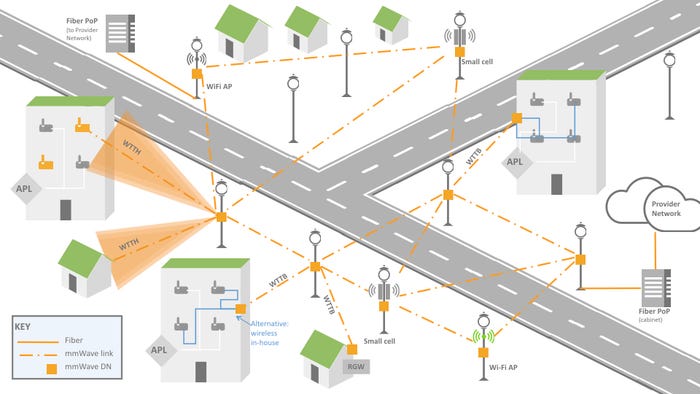DT and Facebook TIP the scales for mmWave
Deutsche Telekom and Facebook has jointly announced a new working group, Millimetre Wave (mmWave) Networks Project Group, to address the growing demand for bandwidth in dense, highly-populated cities.
September 12, 2017

Deutsche Telekom and Facebook has jointly announced a new working group, Millimetre Wave (mmWave) Networks Project Group, to address the growing demand for bandwidth in dense, highly-populated cities.
Nestled in the wider Telecom Infra Project, the objective here is to make use of the much heralded millimetre wave spectrum, airwaves which have been billed as the saviour of 5G. The news will be welcomed by operators such as AT&T and Verizon, as well as urbanites who might struggle for connectivity in coming years, as data trends continue to spiral upwards.
“The mmWave group will focus on advancing networking solutions that use the 60 GHz frequency band, which many governments are allocating for 5G and other high-bandwidth applications,” said Andreas Gladisch of Deutsche Telekom, and Salil Sawhney of Facebook, (the project groups co-chairs) in a blog entry.
“This large slice of unlicensed spectrum can support the bandwidth required by virtual reality, augmented reality, 4K video streaming, smart city sensors and other emerging bandwidth-intensive applications.”
For those who want a bit of a recap. TIP is an open-source telco project, aimed at reducing the price point of operating mobile networks. It has been led from the beginning by Facebook, who might have thought it was about time to get back into the good books of the operators. There is only so long Facebook and other over-the-top content providers can use their infrastructures at no cost, without receiving passive aggressive digs.
On the business side of things, Facebook does need networks to get better as well. Video has been targeted as a massive growth area for the social media giant, but if the networks aren’t there to support the experience for the user, it is hardly going to be a successful venture. Finding cost effective solutions for the operators to roll out more advanced and cost effective infrastructure is very much in the interest of Zuckerberg and co.

The focus of this group will primarily be the design of nodes that combine radio transmitters and receivers, which make use of a mesh configuration, with traffic hopping from node to node to reach the reception point. Think of the signal bouncing around off nodes on utility poles, street lamps and the sides of buildings, before hitting a Wi-Fi access point, small cell or a building.
Using this method coverage could be provided to a pretty large area, but with a small number of nodes hooked up to the fibre infrastructure. In a perfect world, it is considerably more cost effective, much quicker to deploy and more flexible. Think about it this way, the less fibre which is going into the ground, the happier operators (and their investors) will be. Whether you’re talking about smart city applications, or mobile backhaul, there are certainly use cases for the group to target.
In terms of the work points for the group, this will be split into four areas. Firstly, a cost economics model, which will help operators determine whether the strategy is one which is orientated towards cost savings or revenue generation. We would assume this decision would have been made beforehand, but validation to build a business case for sign-off is always a useful tool to have.
Secondly, there will be a test and measurement module. You need to know whether the performance and capabilities of 60 GHz networking is actually worth it of course. There will also be network planning tools to help optimize the deployment of the nodes. And finally, best practise papers which range from obtaining spectrum covering permits and rules for attaching nodes to utility poles.
About the Author
You May Also Like


.png?width=300&auto=webp&quality=80&disable=upscale)







.png?width=300&auto=webp&quality=80&disable=upscale)


_1.jpg?width=300&auto=webp&quality=80&disable=upscale)